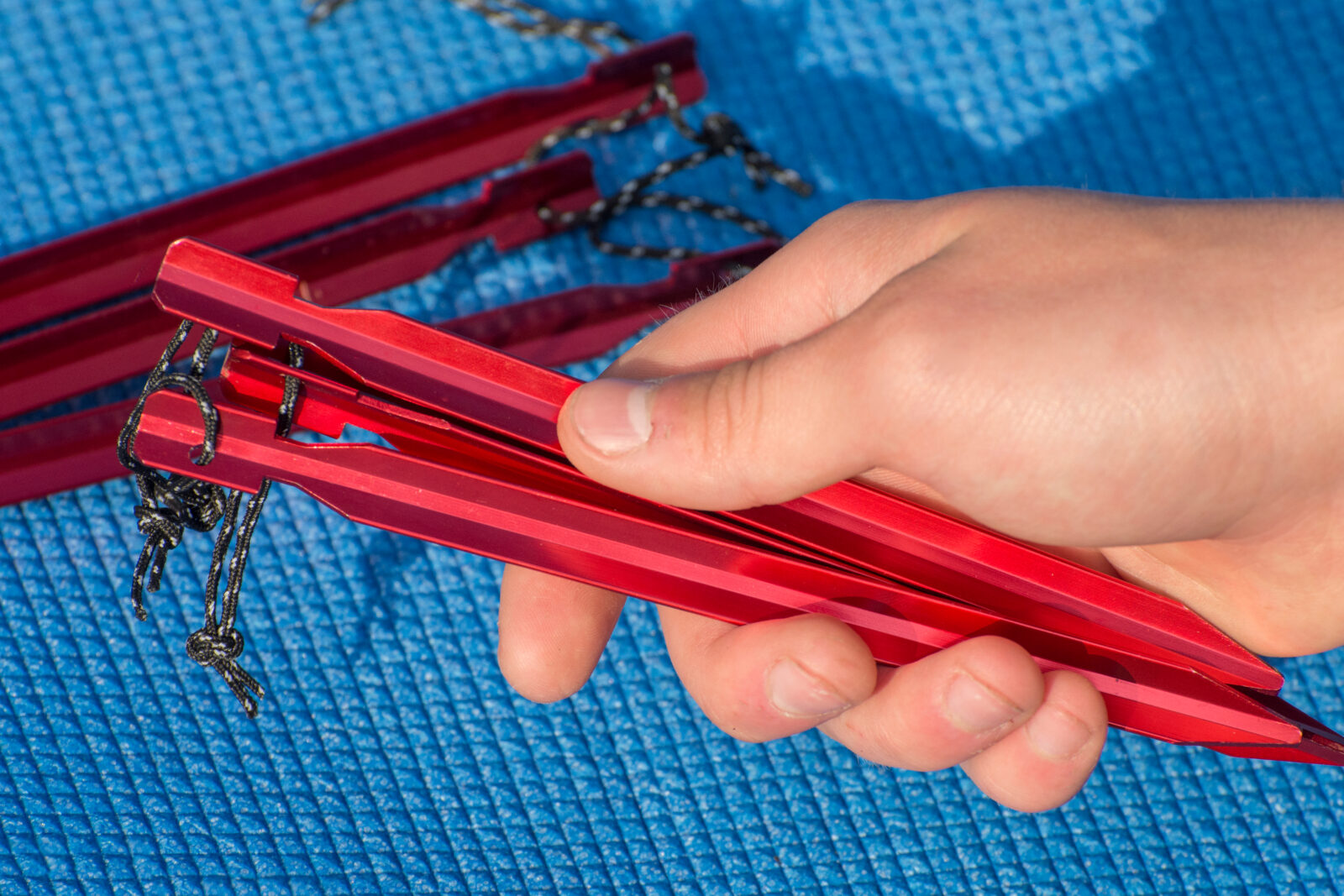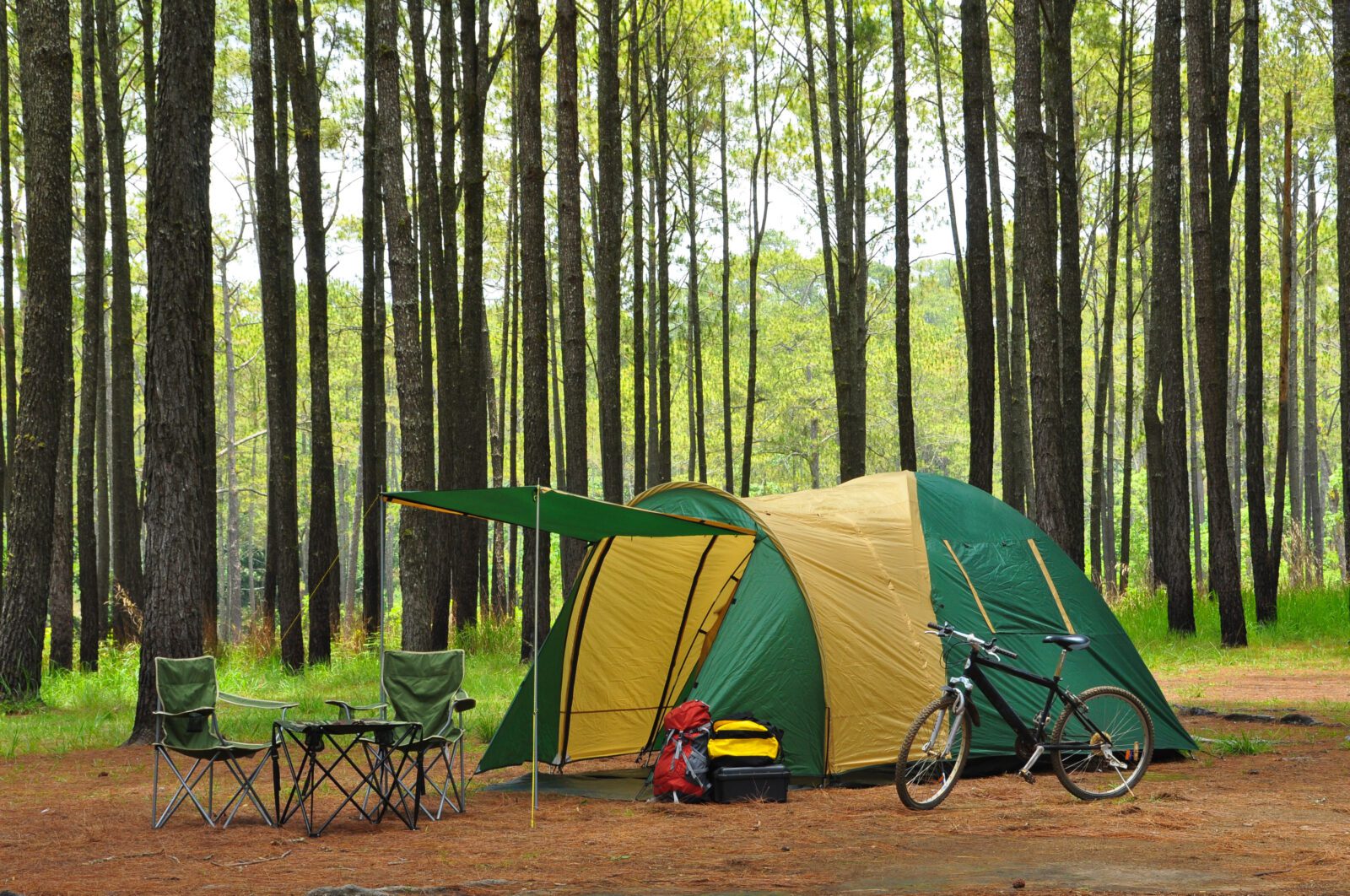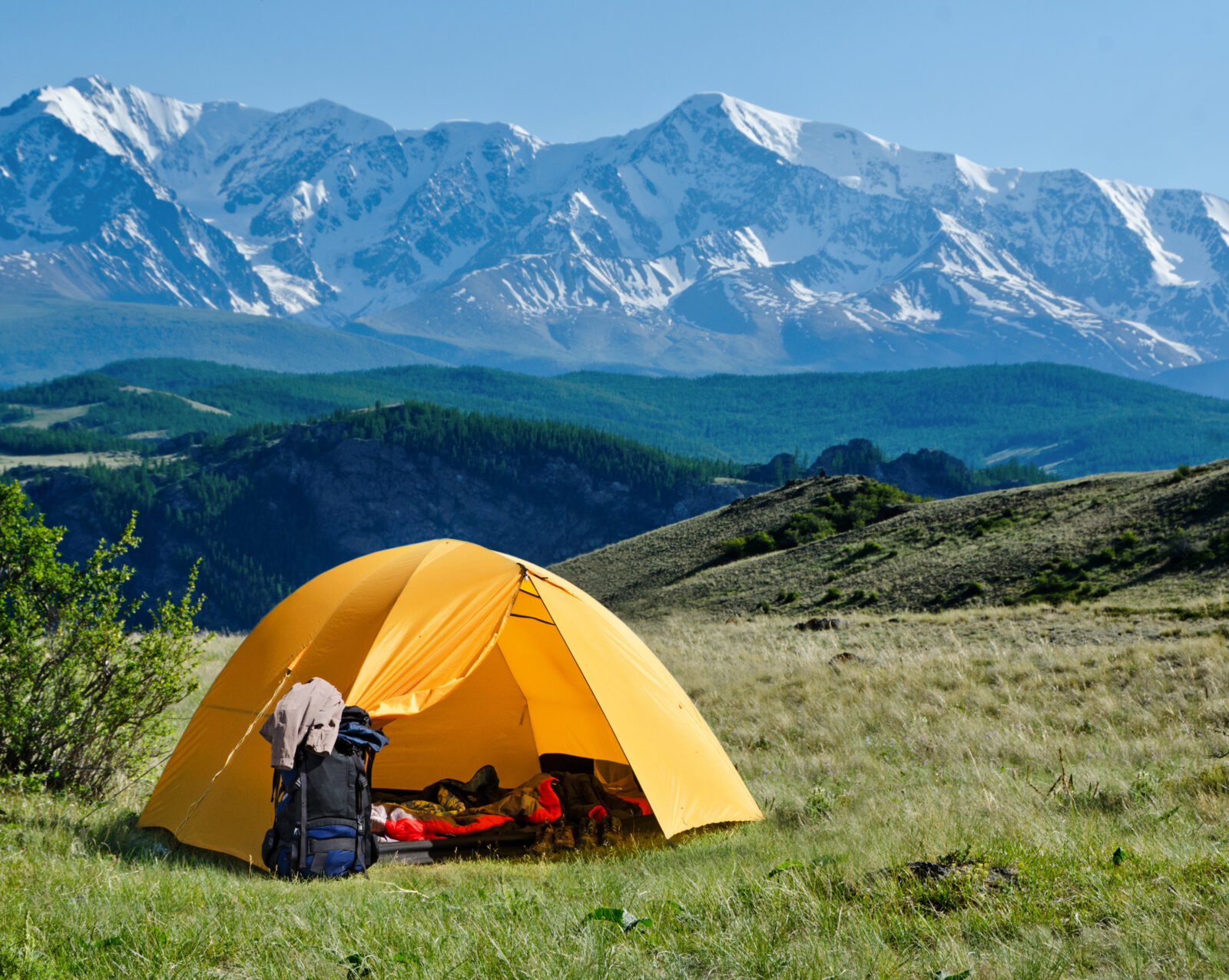Are you struggling to stake out your tent properly during your camping adventures?
We’ve got you covered.
Staking out a tent isn’t always easy, especially because there’s so much misinformation out there about how to do so correctly. To make matters worse, proper tent staking procedures can vary widely based on the type of ground you’re pitching your shelter on for the night.
To ensure that you have the information you need to stake a tent correctly on your next camping trip, we’ve created this guide to do just that.
Up next, we’ll discuss the importance of properly staking out your shelter, be that a glamping tent or a 2 person backpacking tent. As an added bonus, we’ll also offer some times for doing quick and easy tent pitching on any surface.
Let’s get started.
Page Contents
The importance of staking correctly
Tent stakes, or pegs as they’re known in some parts of the world, are one of the most underrated pieces of gear. Although they might look small and insignificant, these metal stakes are critical when it comes to staying warm and dry in the backcountry.
In fact, there are a number of reasons why staking out your tent properly is of the utmost importance. These include :
- Increased wind-resistance. Staking out a tent correctly is vital if you want your tent to efficiently block the wind. While a well-staked 4 person tent can often withstand gale-force winds in Rocky Mountain National Park, a poorly staked tent will flap around endlessly in the same conditions.
- Enhanced waterproofing. Properly anchoring your 6 person tent to the ground can also improve its waterproofing abilities. Indeed, since staking helps to separate the rainfly from the inner body of the tent, doing so correctly can prevent water from seeping into your living space during a rainstorm in Olympic National Park.
- Improved durability. Tents that flap around in the wind are more likely to rip during a storm. Therefore, staking your rainfly and your tent down correctly can help minimize the chances that it will get damaged during your travels.
How to stake a tent on sandy ground
While placing tent stakes in firm soil is generally fairly straightforward, campers have long struggled to stake out their shelters in locales with sandy ground, like Death Valley and Joshua Tree National Parks.
In places with sandy ground, your main concern isn’t the physical placement of the tent stake, but rather getting the stake to stay in place throughout the night.
To help ensure that the stakes of your 2 room tent stay in place during your overnight trip to Zion National Park, you’ll need to invest in a set of proper sand stakes. Otherwise, you’ll be in a constant battle between your gear and the environment.
The difference between sand stakes and other types of tent pegs is that sand stakes have a much larger surface area.
For locations with firmly packed sand, stakes with a bit of a spiral structure to them often offer more than enough grip on the sandy soil. However, if you’re camping at a place with loose sandy ground, you’ll need very long stakes (think about 10” to 12” long) with a broad width to be able to withstand even the slightest amount of wind.
Regardless of what type of stake you use, be sure to drive the stake perpendicularly into the soil rather than at an angle. This will provide the stake with added holding power, especially in sandy soils.
Oh, and if you’re really struggling to get your stakes to stay in place, swap them out for large rocks that you can anchor to, instead. When the wind starts to blow, you’ll be glad that you did.
How to stake a tent on snow and frozen ground
While snow and frozen ground are both common problems for people trying to stake out their tents during the winter months, each situation poses its own unique challenges for campers.
In fact, staking out a tent in the snow-covered ground often involves reverting to many of the tactics that we use when camping in sandy locales. For example, many of the large, wide stakes that we use for sandy soils are suitable for staking out a tent in firm snow.
However, if you’re camping in places with loose snow, or if you’re struggling to properly pitch a tent in a snowy environment using stakes, you may have to shift your tactics. In particular, you may have to use a deadman system, instead.
Using a deadman anchoring system is fairly straightforward: You’ll need multiple sturdy objects, like sticks, and a shovel for the snow. You’ll use your shovel to dig out holes in the snow where you would normally place your stakes.
Afterward, you’ll tie the guylines of your tent to each stick before burying the sticks in the snow. You’ll then pile snow on top of each stake and stamp down on the snow to properly bury your anchors. It might not sound like much, but these anchors can really hold their own in foul weather!
Meanwhile, in frozen ground, like what you’d find at Glacier National Park in the winter, your best option is to invest in a set of titanium or steel nail-style stakes. These stakes are fairly easy to hammer into the ground with a rock, which is effectively your only way to pitch your tent on the frozen ground unless there are boulders or trees nearby that can serve as anchors.
How to stake a tent on gravel
Many campgrounds, like those in Sequoia and Kings Canyon National Parks, offer large, gravel-filled tent pads for campers to pitch their shelters on for the night. However, although these gravelly surfaces are great from an erosion-management perspective, they’re less than ideal for staking out a tent.
The good news is that you can often use standard tent stakes in these environments as they tend to get very good purchase in this type of gravelly soil. You’ll just need to find some method for actually placing the stakes in the ground without accidentally bending them in the process.
The key to placing tent stakes in gravel is to have a hammer or other similar device on hand to force the stake through the loose gravel and into the firm ground below. If you don’t have a hammer, you can use a sturdy rock, but using your foot isn’t advised.
That’s because using your foot is a sure-fire way to bend your stakes as you have minimal control over the amount of pressure that you’re placing on the pegs. Alternatively, using a rock to slowly hammer your stake into the ground is usually your best bet.
Do keep in mind that you may need to reinforce stakes placed in loose gravel by putting a larger rock or log on top of them. This can be helpful if it’s very windy outside as doing so provides extra holding power in foul weather.
How to take a tent in windy locations
Windy locations pose a particular challenge to campers when it comes to staking out a tent. This is because the wind can often be strong enough to rip your stakes out of the ground in one fell swoop.
If wind is in the forecast for your next backpacking trip to somewhere like Great Smoky Mountains National Park, your primary defense against this foul weather is your own ingenuity.
In reality, staking out a tent properly in a windy locale is all about reinforcing your stakes. If anchoring to a more robust structure, like a tree, isn’t possible, you can reinforce your stakes with heavy objects. For example, you can place rocks and logs on top of your stakes to provide them with a bit of extra holding power against the wind.
Additionally, you’ll want to take extra care to properly orient your stakes in the process. Proper stake orientation is especially important if you have J-shaped stakes with a large hook at the top. This hook should face away from your tent to help keep your guy lines in place as much as possible in windy conditions.
We should also note that the orientation of your tent in these windy conditions also makes a difference.
If you have a long, tunnel-shaped tent, you’ll want to orient it so that the head of your sleeping bag and sleeping pad can face into the wind. Otherwise, placing the broadside of the tent into the wind is a great way to turn it into a makeshift sail that will catch the wind and rip your stakes out of the ground in no time flat.
Read More : How to Camp Safely in High Winds
How to take a tent on concrete
Pitching a tent on concrete is a particularly unique challenge simply because you can’t possibly use stakes as your anchors in this situation.
While we humans can make do with tent stakes in a wide variety of environments, there’s little we can do with a tent peg when faced with a solid sheet of concrete. Instead, we have to get a little creative.
Arguably the best way to secure a tent on concrete is to create your own anchor points. To do so, you can often use large rocks or logs that you find in your camping area.
Alternatively, for larger tents or in situations where there aren’t any large rocks, you can create makeshift anchor points using some sturdy 5-gallon buckets. Once you have your buckets at the ready, you can fill them with smaller pebbles and other similar debris.
As soon as you’ve gathered enough debris to weigh down the buckets, you can attach your guylines to them, just like you would do with a proper tent stake to set up your shelter for the night.
Recommended Reads :
Gaby Pilson
Gaby is a professional mountain guide with a master’s degree in outdoor education. She works primarily in the polar regions as an expedition guide, though she can be found hiking, climbing, skiing, sailing, or paddling in some of the world’s most amazing places when not at work.


